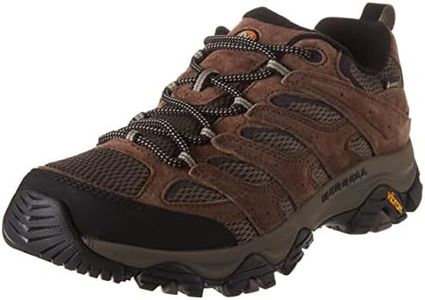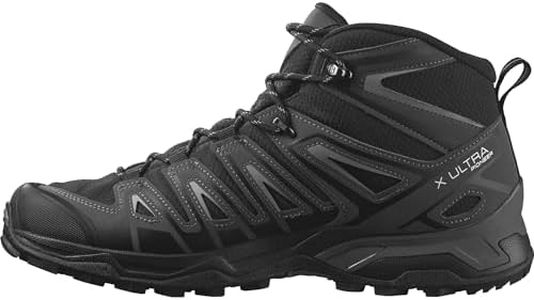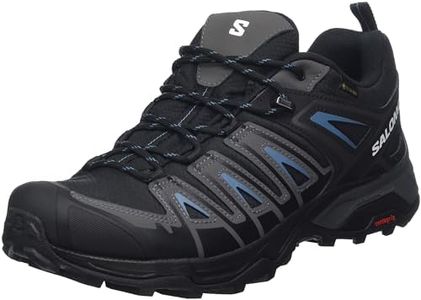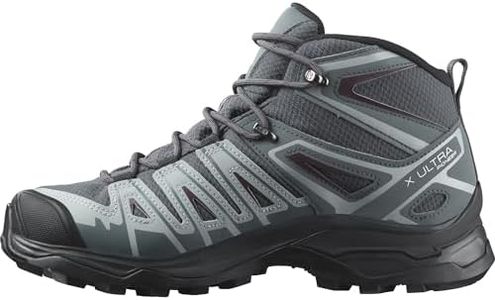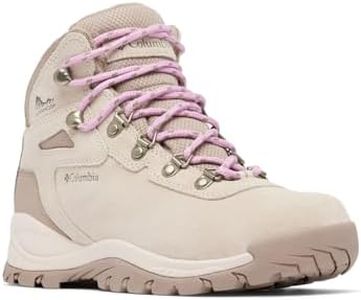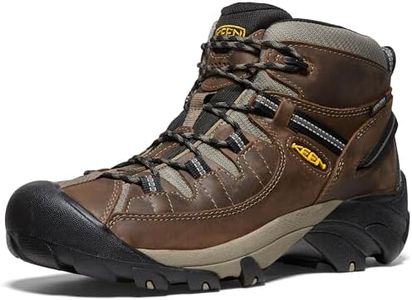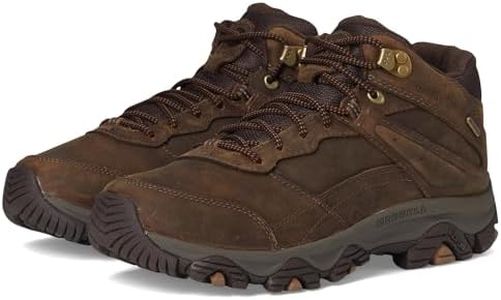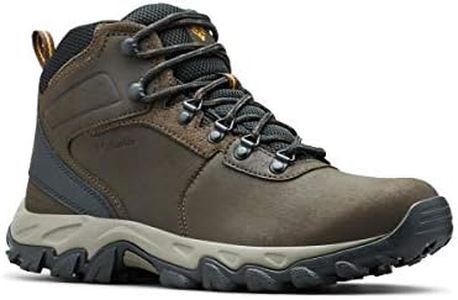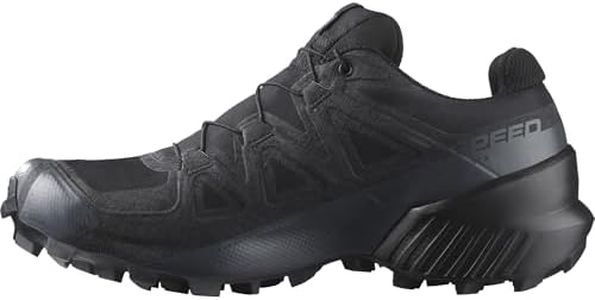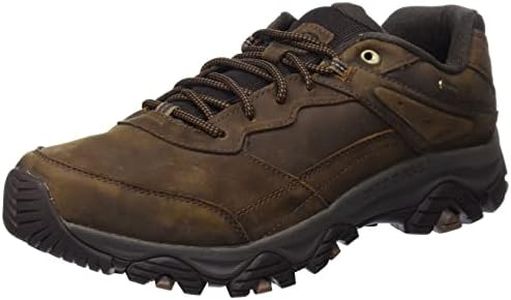We Use CookiesWe use cookies to enhance the security, performance,
functionality and for analytical and promotional activities. By continuing to browse this site you
are agreeing to our privacy policy
10 Best Waterproof Hiking Shoes
From leading brands and best sellers available on the web.Buying Guide for the Best Waterproof Hiking Shoes
Choosing the right waterproof hiking shoes is essential for enjoying your outdoor adventures while keeping your feet dry, comfortable, and supported. When shopping for these shoes, it's important to think about the type of hikes you plan to go on, the weather conditions you expect, and your personal comfort preferences. Knowing which specs to look at will help you sort through all the options and zero in on the pair that works best for your needs.Waterproof MembraneThe waterproof membrane is the layer in the shoe that keeps water out while still letting moisture from sweat escape. Common materials include Gore-Tex, eVent, and other proprietary technologies. The main purpose of this membrane is to allow you to hike through wet grass, puddles, or rain without your feet getting soaked. Some membranes are more breathable than others, which can impact how sweaty your feet feel during exertion. If you hike in very wet areas, prioritize a more robust waterproof barrier, while dry-weather hikers can focus more on breathability.
Sole Grip (Traction)Sole grip refers to how much traction the shoe provides on different surfaces. This is determined by the tread pattern and rubber compound used in the sole. Hiking shoes with deeper, more aggressive lugs offer better grip on muddy or loose terrain, while flatter soles suit well-maintained trails. If you often hike on slippery, rocky, or uneven ground, look for shoes with prominent tread. For mainly flat, dry trails, a less aggressive sole can be more comfortable and lightweight.
Cushioning and SupportCushioning and support relate to the comfort of the midsole and the overall structure of the shoe. Shoes with thick midsoles absorb more shock, which is helpful on long or rocky trails. Support features, like shanks or sturdy sides, help keep your feet stable on uneven ground. Lightweight, flexible shoes may be better for short hikes or smooth paths, while structured shoes with more cushioning suit long hikes or carrying a heavy backpack.
WeightThe weight of the shoe affects how tired your feet get during a hike. Lighter shoes are easier to wear for long distances and feel more like running shoes, making them a good choice for faster hikes or less rugged terrain. Heavier shoes typically offer more protection and durability, ideal for rough trails or heavier loads. Match the shoe weight to your activity: go lighter for speed and comfort, heavier for protection and challenging hikes.
Fit and ComfortFit and comfort refer to how the shoes feel on your feet right out of the box and after several hours of use. This includes the room in the toe box, the snugness around the heel, and if there are any pressure points. Since everyone's feet are different, trying shoes on and walking around is the best way to assess this. For hikers with wide or narrow feet, looking for brands or models offering different width options can enhance comfort. Always prioritize a good fit to avoid blisters and discomfort on the trail.
BreathabilityBreathability is about how well the shoes allow moisture and heat to escape. While waterproofing is important, it can sometimes make shoes less breathable, leading to sweaty feet. Breathable shoes use mesh panels or specific membrane technologies to balance water resistance and airflow. If you hike in warm weather or don't often get very wet, opt for shoes with greater breathability to keep your feet cool and dry.
DurabilityDurability is how well the shoes stand up to repeated use in rough conditions. This depends on the materials used for the upper, the stitching, and the quality of the sole. Shoes made with thicker leather or abrasion-resistant synthetic materials tend to last longer but may be heavier. If you hike frequently or on challenging terrain, choosing more durable shoes can be worthwhile. For occasional, gentle hikes, lighter and less rugged shoes can suffice.
